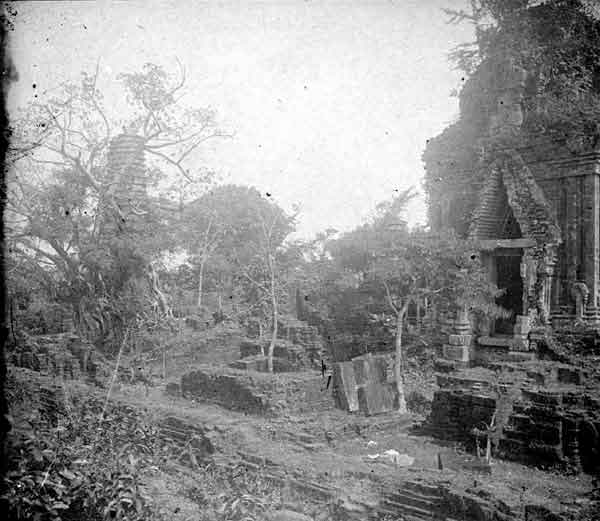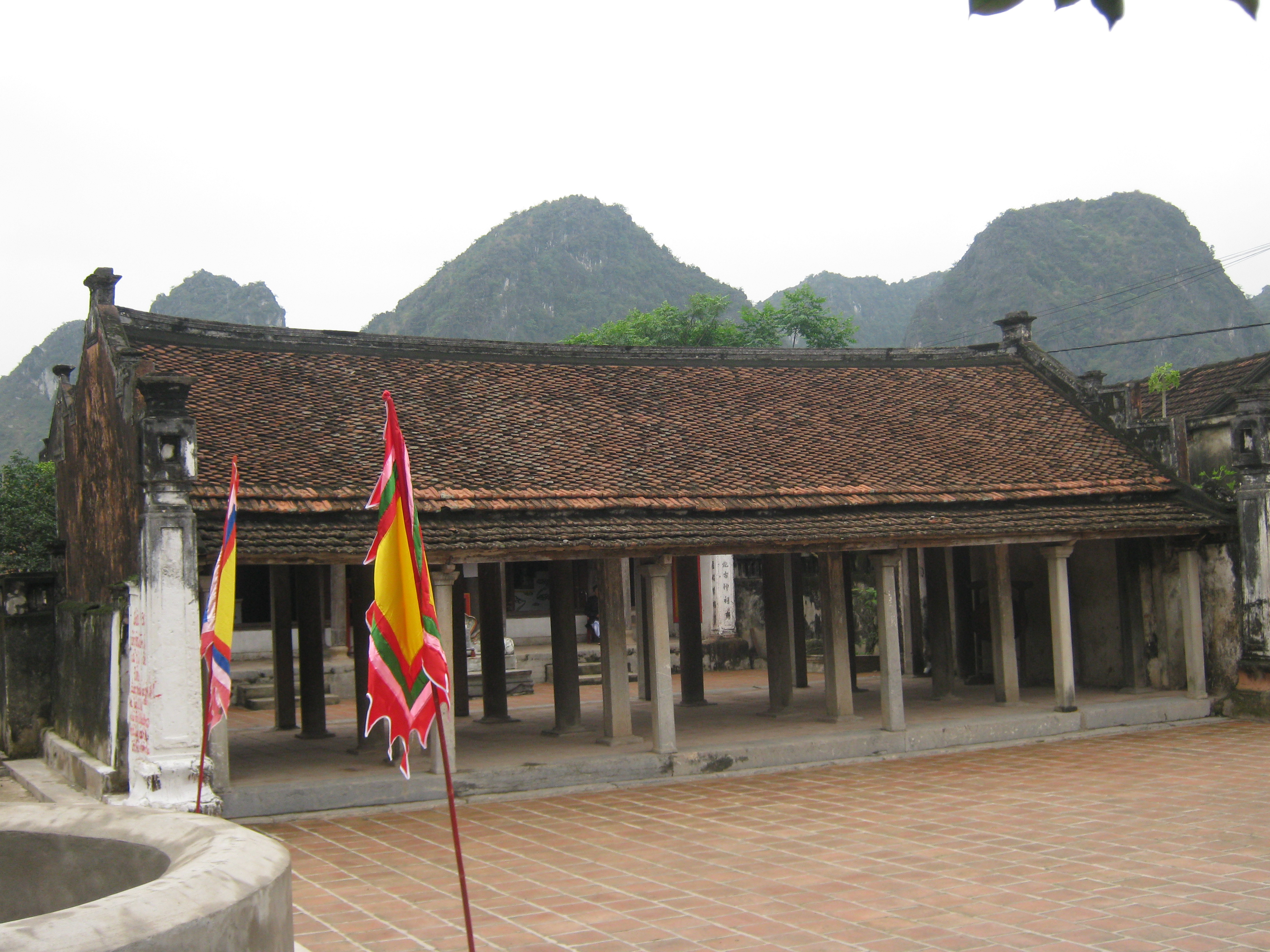|
Indrapura (Champa)
Indrapura was the capital city of the kingdom of Champa from 875 AD until 982, or until 12th century AD, for several decades, under the reign of Indravarman I (877-890) and some of his followers belonging to the 6th dynasty in Dong Duong. The word Indrapura means "City of Indra" in Sanskrit, Indra being the Hindu God of Storm and War, and King of the Gods in the Rig Veda. Nomenclature Indrapura (nowadays Đồng Dương) was transcribed in both Chinese and Vietnamese sources as ''Fóshì/Phật Thệ'' (Chinese: 佛逝) or ''Fóshìchéng'' (Chinese: 佛逝城, lit. 'the City of Indra' or 'the city of Buddha'). Previous generations of French scholarships mistakenly attributed Fóshì to Vijaya (Chinese: 尸唎皮奈; pinyin: ''Shīlì Pínài''; Vietnamese: ''Thị Lợi Bi Nai''; alternate: ''Chà Bàn''). History King Vikrantavarman III of Champa installed his government in Virapura ( Phan Rang, Ninh Thuận province). Being heirless, he had to choose one of the sons of the ro ... [...More Info...] [...Related Items...] OR: [Wikipedia] [Google] [Baidu] |
Champa
Champa ( Cham: ꨌꩌꨛꨩ; km, ចាម្ប៉ា; vi, Chiêm Thành or ) were a collection of independent Cham polities that extended across the coast of what is contemporary central and southern Vietnam from approximately the 2nd century AD until 1832, when it was annexed by the Vietnamese Empire under its emperor Minh Mạng. The kingdom was known variously as ''Nagaracampa'' ( sa, नगरचम्पः), ''Champa'' (ꨌꩌꨛꨩ) in modern Cham, and ''Châmpa'' () in the Khmer inscriptions, ''Chiêm Thành'' in Vietnamese and ''Zhànchéng'' ( Mandarin: 占城) in Chinese records. The Kingdoms of Champa and the Chams contribute profound and direct impacts to the history of Vietnam, Southeast Asia, as well as their present day. Early Champa, evolved from local seafaring Austronesian Chamic Sa Huỳnh culture off the coast of modern-day Vietnam. The emergence of Champa at the late 2nd century AD shows testimony of early Southeast Asian statecrafting and cru ... [...More Info...] [...Related Items...] OR: [Wikipedia] [Google] [Baidu] |
Shailendra Dynasty
The Shailendra dynasty (, derived from Sanskrit combined words ''Śaila'' and ''Indra'', meaning "King of the Mountain", also spelled Sailendra, Syailendra or Selendra) was the name of a notable Indianised dynasty that emerged in 8th-century Java, whose reign signified a cultural renaissance in the region. The Shailendras were active promoters of Mahayana Buddhism with the glimpses of Hinduism, and covered the Kedu Plain of Central Java with Buddhist monuments, one of which is the colossal stupa of Borobudur, now a UNESCO World Heritage Site. The Shailendras are considered to have been a thalassocracy and ruled vast swathes of maritime Southeast Asia, however they also relied on agricultural pursuits, by way of intensive rice cultivation on the Kedu Plain of Central Java. The dynasty appeared to be the ruling family of both the Mataram Kingdom of Central Java, for some period, and the Srivijaya Kingdom in Sumatra. The inscriptions created by Shailendras use three language ... [...More Info...] [...Related Items...] OR: [Wikipedia] [Google] [Baidu] |
Khâm định Việt Sử Thông Giám Cương Mục
The ''Khâm định Việt sử Thông giám cương mục'' ( vi-hantu, 欽定越史通鑑綱目, lit. "The Imperially Ordered Annotated Text Completely Reflecting the History of Viet") was a history of Vietnam commissioned by the emperor Tự Đức of the Nguyễn dynasty.Keith Weller Taylor The Birth of Vietnam 1991 - Page 359 "The Kham dinh Viet su thong giam cuong muc (Imperially Ordered Annotated Text Completely Reflecting the History of Viet) was initially assembled in 1856-59 and thereafter revised and annotated in 1871, 1872, 1876, and 1878 (Cadiere and ..." It was written in Văn ngôn (which is a form of Classical Chinese used in Vietnam). Emperor Tự Đức's interest in history led him to order the creation of this book in 1856. He appointed Phan Thanh Giản the chief editor. It was finished in 1859 and additionally annotated by the emperor himself. After several modifications in 1871, 1872, 1876, and 1878, the book was finally published in 1884. ''Khâm định ... [...More Info...] [...Related Items...] OR: [Wikipedia] [Google] [Baidu] |
History Of Song (book)
The ''History of Song'' or ''Song Shi'' () is one of the official Chinese historical works known as the ''Twenty-Four Histories'' of China that records the history of the Song dynasty (960–1279). It was commissioned in 1343 and compiled under the direction of First Minister Toqto'a and Prime Minister Alutu () during the Yuan dynasty (1271–1368) at the same time as the ''History of Liao'' and the '' History of Jin''. Running to a total of 496 chapters, the ''History of Song'' includes biographies of the Song Emperors along with contemporary records and biographical sketches of Song dynasty politicians, soldiers and philosophers. Publication process Kublai Khan endorsed a proposal by Liu Bingzhong and Wang E (, 1190–1273) for the compilation of historic records of the Song, Jin, and Liao dynasties but the compilation effort stalled for some time. In March 1343, the third year of Ukhaantu Khan, Emperor Huizong of Yuan's Zhizheng Era (), an Imperial edict ordered the creati ... [...More Info...] [...Related Items...] OR: [Wikipedia] [Google] [Baidu] |
Song Dynasty
The Song dynasty (; ; 960–1279) was an imperial dynasty of China that began in 960 and lasted until 1279. The dynasty was founded by Emperor Taizu of Song following his usurpation of the throne of the Later Zhou. The Song conquered the rest of the Ten Kingdoms, ending the Five Dynasties and Ten Kingdoms period. The Song often came into conflict with the contemporaneous Liao, Western Xia and Jin dynasties in northern China. After retreating to southern China, the Song was eventually conquered by the Mongol-led Yuan dynasty. The dynasty is divided into two periods: Northern Song and Southern Song. During the Northern Song (; 960–1127), the capital was in the northern city of Bianjing (now Kaifeng) and the dynasty controlled most of what is now Eastern China. The Southern Song (; 1127–1279) refers to the period after the Song lost control of its northern half to the Jurchen-led Jin dynasty in the Jin–Song Wars. At that time, the Song court retreated south of the ... [...More Info...] [...Related Items...] OR: [Wikipedia] [Google] [Baidu] |
Lưu Kế Tông
Lưu Kế Tông or Lưu Kỳ Tông (?–989) ( chữ Hán: 劉繼宗; Chinese: Liu Ji-zong), was the king of Champa from 986 to 989. After the Vietnamese invasion in 982 led by Lê Hoàn that devastated the northern region of Champa, the new Cham king Indravarman IV took refuge in the southern part of the country. Taking advantage of the unrest, Lưu Kế Tông, a Vietnamese military officer from Quảng Bình (located in the northern-tip of Champa), had seized power in Indrapura. In 983 he successfully resisted Lê Hoàn's attempt to depose him. In 986, Indravarman IV died and Lưu Kế Tông proclaimed himself King of Champa. He immediately sent a embassy led by a Muslim named Lý Triêu Tiên to Song China to seek Chinese recognition.'' History of Song'', vol. 489 Following the usurpation of Lưu Kế Tông, many Chams and Muslims fled to Song China, especially Hainan and Guangzhou to seek refuge. In the same year, some hundreds people from Champa led by Pu Bo E (Abu Nur ... [...More Info...] [...Related Items...] OR: [Wikipedia] [Google] [Baidu] |
Lê Hoàn
Lê Hoàn (10 August 941 – 18 March 1005), posthumously title Lê Đại Hành, was a Vietnamese emperor and the third ruler of Dai Viet kingdom, ruling from 981 to 1005. He first served as the generalissimo commanding a ten-thousand man army of the Dai Viet court under the reign of Đinh Bộ Lĩnh. Following the death of Đinh Bộ Lĩnh in late 979, Lê Hoàn became regent to Đinh Bộ Lĩnh's successor, the six-year-old Đinh Toàn. Lê Hoàn deposed the boy king, married his mother, Queen Duong Van Nga, and in 980 he became the ruler. He commanded the Viet army fended off a northern invasion in 981, then led a seaborne invasion of the southern Champa kingdom in 982. Early career Lê Hoàn was born in 941, a native of Ai Province ( Thanh Hoa). He rose to power as a general of the Hoa Lu warlord Đinh Bộ Lĩnh. In 968, after defeating all other warlords, Đinh Bộ Lĩnh founded the Dai Viet kingdom with Hoa Lu as capital. Lê Hoàn was appointed the title "General of ... [...More Info...] [...Related Items...] OR: [Wikipedia] [Google] [Baidu] |
Early Lê Dynasty
The Early Lê dynasty, alternatively known as the Former Lê dynasty ( vi, Nhà Tiền Lê; chữ Nôm: ; ) in historiography, officially Great Cồ Việt (; Chữ Hán: 大瞿越), was a dynasty of Vietnam that ruled from 980 to 1009. It followed the Đinh dynasty and was succeeded by the Lý dynasty. It comprised the reigns of three emperors. Founding After the assassination of the emperor, Đinh Tiên Hoàng, and the emperor's first son, Đinh Liễn, the third son of the emperor, Đinh Phế Đế, assumed the throne at aged six with the regent Lê Hoàn. During the regency of Lê Hoàn, members of the imperial court skeptical of Lê Hoàn's loyalty to the true emperor, such as the Duke of Định Nguyễn Bặc and General Đinh Điền, led an army to the imperial palace in an attempted coup. The failure of the undertaking caused those two to be executed. In 980, the Song dynasty of China under Emperor Taizong ordered a Chinese army to invade Đại Cồ Việt. Be ... [...More Info...] [...Related Items...] OR: [Wikipedia] [Google] [Baidu] |
Đại Việt
Đại Việt (, ; literally Great Việt), often known as Annam ( vi, An Nam, Chữ Hán: 安南), was a monarchy in eastern Mainland Southeast Asia from the 10th century AD to the early 19th century, centered around the region of present-day Hanoi, Northern Vietnam. Its early name, Đại Cồ Việt,( Hán tự: 大瞿越) was established in 968 by Vietnamese ruler Đinh Bộ Lĩnh after he ended the Anarchy of the 12 Warlords, until the beginning of the reign of Lý Thánh Tông (r. 1054–1072), the third emperor of the Lý dynasty. Đại Việt lasted until the reign of Gia Long (r. 1802–1820), the first emperor of the Nguyễn dynasty, when the name was changed to Việt Nam. Đại Việt's history is divided into the rule of eight dynasties: Đinh (968–980), Early Lê (980–1009), Lý (1009–1226), Trần (1226–1400), Hồ (1400–1407), and Later Lê (1428–1789); the Mạc dynasty (1527–1677); and the brief Tây Sơn dynasty (1778–1802). It was brie ... [...More Info...] [...Related Items...] OR: [Wikipedia] [Google] [Baidu] |






